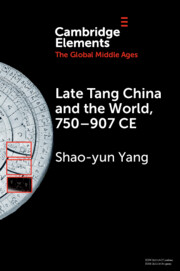Element contents
Late Tang China and the World, 750–907 CE
Published online by Cambridge University Press: 05 May 2023
Summary
- Type
- Element
- Information
- Online ISBN: 9781009397278Publisher: Cambridge University PressPrint publication: 25 May 2023
Bibliography
- 6
- Cited by



